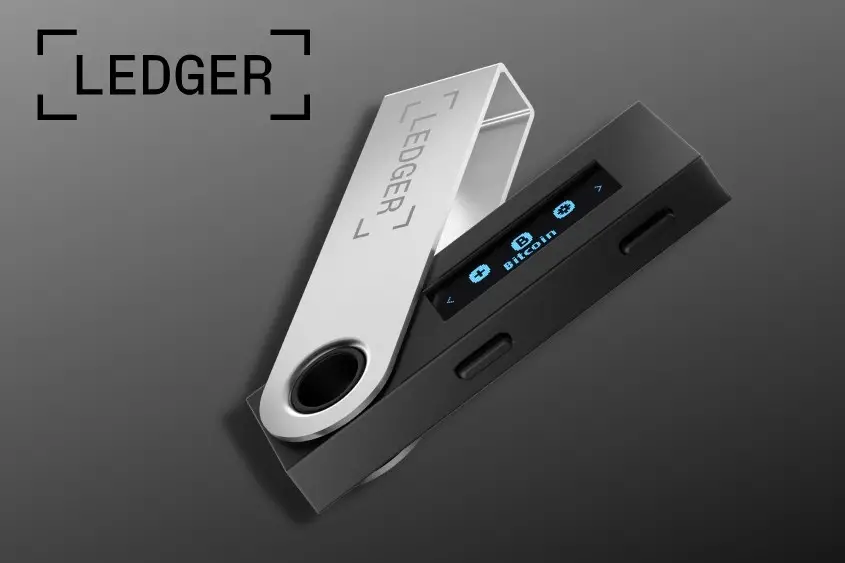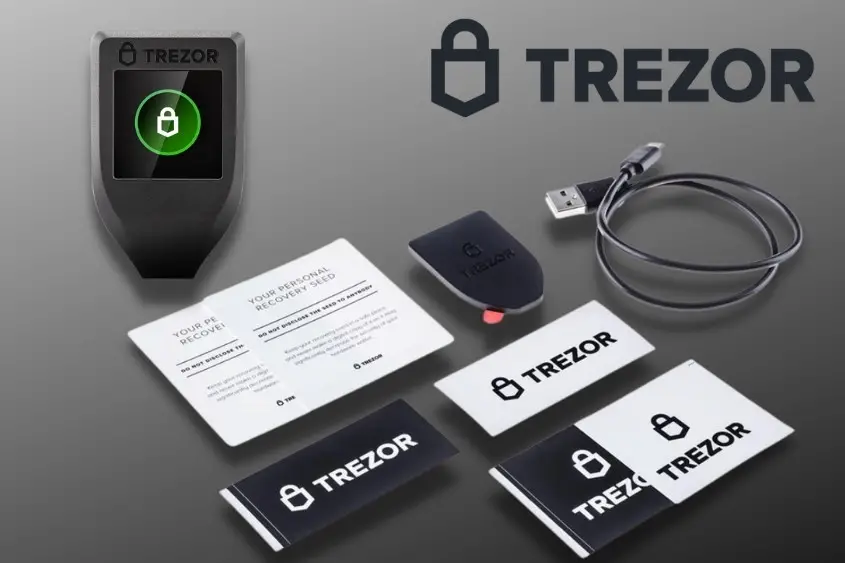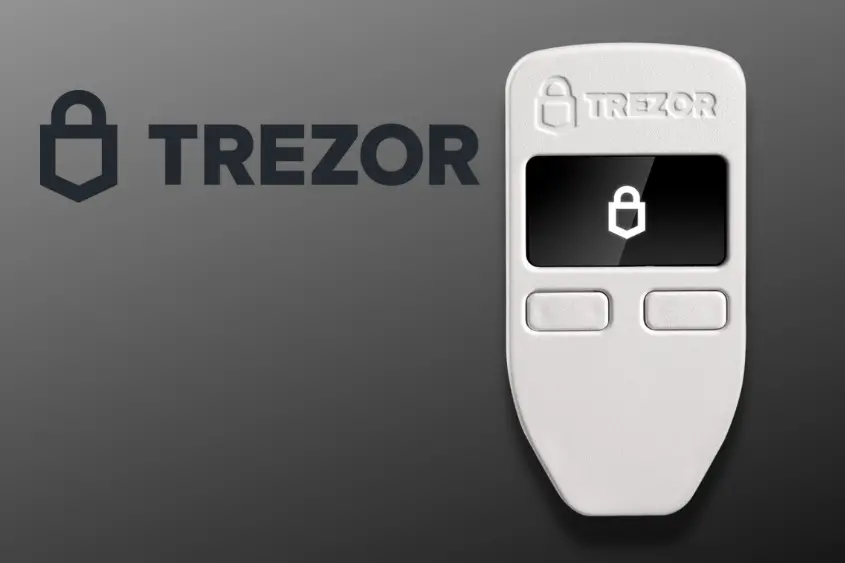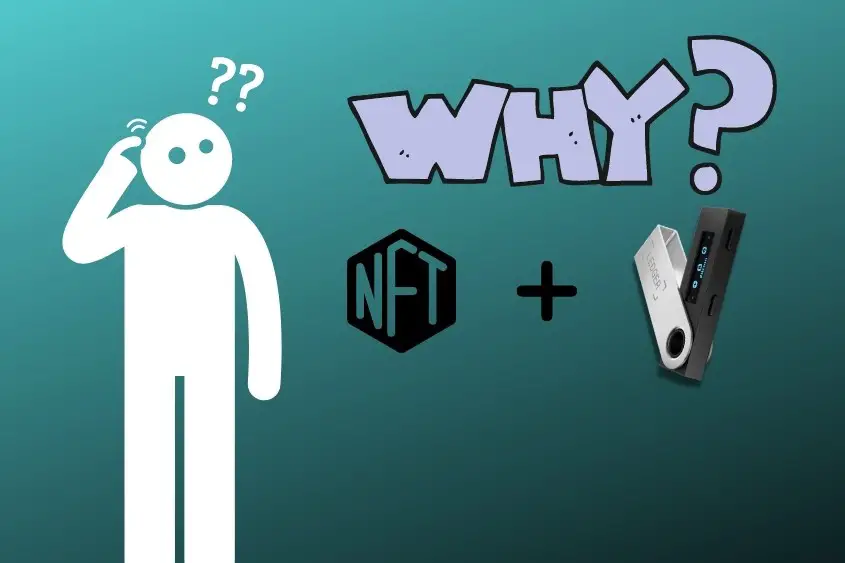Regrettably, the Web3 space continues to be a virtual minefield for hackers and scammers. Whether it’s cryptocurrencies or NFTs, you should always store your assets in a safe hardware wallet.
The Ledger Nano X is the best hardware wallet for securely storing your NFTs. It is an aesthetically pleasing, highly secure, and simple-to-use cold-storage hardware wallet that keeps all your login information offline, reducing the risk of being compromised.
Storing your NFTs safely is the biggest concern for any NFT holder. Below are some of the best hardware wallets currently available on the market.
1. Ledger Nano X

The Ledger X is the best hardware wallet on the market today and is trusted by a majority of NFT collectors, investors, and creators to safely store their digital assets such as NFTs and crypto. For only $149 on Ledger’s site, this wallet is more than worth it to ensure the safety of your NFTs.
You can take 10% off Ledger Nano X and Ledger Nano S+ wallets by using my code MOVESOL2LEDGER at checkout.
My favorite thing about the Ledger Nano X is that you can use it to buy NFTs directly from an NFT marketplace, just as you would when using a Metamask wallet. All you need to do is simply connect it to your computer when purchasing, then once you’re done, disconnect your wallet and feel good knowing your NFTs are safe.
Also, the Ledger Nano X is super simple to use and has a built-in battery and enhanced asset management capabilities like Bluetooth. It features a matte black finish and a 128 x 64-pixel screen for cycling through applications. The wallet supports over 1,800 coins and tokens.
The Bluetooth Low Energy connectivity enables the Nano X to be used with the Ledger Live software (Android or iOS devices) to complete crypto transactions in real-time. Furthermore, the Secure Element chip from Ledger is a specialized chip used in high-end security solutions such as credit cards and passports that protects against a variety of attacks.
Pros:
- Supports a massive amount of digital assets including NFTs
- Constructed with specialized hardware to safeguard your private keys
- Bluetooth technology enables trading via the Ledger Live mobile application
- Built-in battery with an 8-hour battery life
Cons:
- More expensive than other types of cold storage wallets
- For some, the usage of Bluetooth technology may raise privacy concerns
- There is no touchscreen
- If the gadget is lost, everything is lost
2. Ledger Nano S

The Ledger Nano S is an excellent cold storage wallet for investors on a budget and was one of the first hardware wallets to support over 1800 cryptocurrencies, and of course, will hold any NFTs you wish to keep safe.
The Nano S is nearly identical to the Ledger Nano X but costs significantly less at $59 on the Ledger site. It supports the same number of cryptocurrencies as the Nano X version and provides users with access to the Ledger Live program. The Nano S has the same secure chip as the Nano X — CC EAL5+.
On the other hand, the Nano S lacks Bluetooth connectivity and can only store 3 apps at a time (compared to the Nano X’s 100-app-at-a-time capacity). This means that if you hold NFTs from several different blockchains, you may want to consider the Ledger Nano X instead.
The Nano S is Ledger’s best-selling wallet because it is an excellent choice for cryptocurrency beginners. The Ledger is solid at storing, trading, and transferring large sums of cryptocurrency, mainly BTC, ETH, and LTC.
Pros:
- It is affordable
- Private keys are never removed from the device
- Supports over 1,100 different coins and tokens
Cons:
- Limited storage space for cryptocurrency applications
- The display is tiny and does not include a touchscreen
- Not as convenient to use on the go as other wallets
3. Ledger Nano S Plus

The Ledger Nano S just got better with Ledger’s introduction of the new $79 Ledger Nano S Plus. The new Nano S Plus is similar to the original Nano S, except it is more DeFi and NFT-friendly. Also, it comes equipped with a larger screen and added memory compared to the smaller screen and limited memory found on the Nano S.
The larger screen on the Plus makes it even easier to navigate and verify transactions, plus the added memory means you are able to have over 100 apps installed simultaneously. The Plus still comes with Ledger’s certified secure chip (CC EAL5+) which keeps your private keys offline, and out of hackers’ reach.
Furthermore, you can easily send and sign your NFT transactions with full transparency in Ledger Live— this means that what you see is what you sign.
Pros:
- Larger screen for easy transaction verification
- More memory means you can store more apps, and hold more NFTs
- You still get the added protection from Ledger’s certified CC EAL5+ chip
- Easily send and sign NFT transactions using Ledger Live
Cons:
- The Plus is slightly more expensive than the original Nano S
4. Trezor Model T

Trezor has been operating for quite some time, having been founded in 2011 as a subsidiary of SatoshiLabs in the Czech Republic. The $215 Model T is Trezor’s second-generation hardware wallet, and it includes many of the same capabilities as the Ledger Nano X, but with a higher price tag.
One big difference is that Trezor’s software is entirely open-source, which provides some additional safety. Trezor Suite is meant to operate natively on your desktop, which provides a higher level of protection than a web-based application. However, it is also accessible via the company’s website.
The Model T, shaped like an old-school stopwatch, includes a touchscreen and a USB cable for connecting to your computer; it also includes a microSD card for adding encrypted storage directly to your hardware wallet. It does not, however, include Bluetooth capability, which some security advocates would prefer, as hackers might try to exploit Bluetooth connectivity.
Trezor Model T wallets presently support over 1,600 coins and tokens, and transactions may be completed from within Trezor Suite using the company’s integrated exchange.
While the Trezor Model T can secure NFTs, it can not be done in Trezor Suite. To manage NFTs securely, a third-party interface like Metamask should be used. This is still safe, as long as you properly set up Metamask to communicate directly with your Trezor so your seed remains offline at all times.
You can learn how to store NFTs on Trezor using Metamask, via Trezor’s official Blog.
Pros:
- Extremely secure hardware wallet; neither the wallet nor the keys ever leave the device
- A more readable touchscreen than the Ledger Nano X
- Connectivity via USB to a PC or an Android phone
- Verify and authorize all actions using the touchscreen
Cons:
- The price is pretty exorbitant
- Inconspicuous design puts the user at risk of being the victim of a physical attack or theft
5. Trezor One

Trezor One is the world’s most trusted and widely used hardware wallet and only costs $70 on Trezor’s site. Launched in August 2014 as the world’s first Bitcoin hardware wallet, it provides unmatched NFT and crypto security, password management, and two-factor authentication, all while remaining completely user-friendly, regardless of whether you’re an expert or a novice.
It is compatible with Windows, Linux, Mac, and Android operating systems and also enables users to immediately access third-party exchanges such as Changelly and Shapeshift through the site’s interface.
The device is compact, lightweight, functional, and simple to operate. Similar to a standard car key, it may be conveniently carried around and attached to any computer nearby when ready to use. However, in comparison to the Ledger Nano X wallet, it is more practical and lacks in terms of appearance and luxury.
Coin support has been expanded recently, with the wallet now supporting over 1000 cryptocurrencies, and the Trezor One’s supported digital assets rival those of the Ledger devices. Most users will discover that their favorite assets, including all ERC-20 tokens (NFTs), are supported.
Trezor has established itself as an industry leader in the security space, and the Trezor One is no exception. The Trezor One is a secure storage device for crypto assets that also allows users to add a passcode for added security.
Trezor One is an excellent entry-level wallet that should suit all of the needs of a newcomer or trader that conducts multiple NFT transactions regularly.
Pros:
- Affordable
- Simple to use
- Using USD, purchase cryptocurrencies, and exchange them in the wallet
- Support for web browsers, desktop operating systems, and Android
- Supports nearly a thousand different coins and tokens
Cons:
- iOS is not supported
- Only a limited number of cryptocurrencies can be purchased using fiat
- A little pricy in comparison to the competition
Can you store NFTs on a hardware wallet?
Hardware wallets are the preferred option for storing your NFTs. A hardware wallet stores all your wallet’s info offline including the secret phrase, password, and other securities used to protect your NFTs. However, your NFTs are still stored on the blockchain, which is only accessible through your wallet.
A hardware wallet simply handles and stores all the technical data used to access your wallet, plus it acts as an easy-to-use interface for purchasing, trading, and transferring crypto and NFTs.
The important thing to realize is that all NFTs are technically stored on the blockchain, not in the wallet itself. Your wallet simply acts as the gatekeeper to your account, which controls your NFTs on the blockchain. Hence why you want to have the most secure wallet possible.
Why store NFTs on a hardware wallet?

The reason individuals use hardware wallets to store their NFTs is that the wallet is physically securable and cannot be hacked or modified when it is not in use and is offline. A hardware wallet is the most secure NFT storing method that is still practical for most people.
Apart from keeping your crypto and NFTs safe, a hardware wallet keeps the owner’s private keys and critical information. It enables access to blockchain-based assets by supplying that address with a secret key that allows the wallet owner to authenticate transfers.
You effectively own anything at that address if you have the private key. This enables the wallet’s owner to authorize transactions that travel through it, eliminating the possibility of illegal hacking and theft of your digital assets.
Top tips for using a hardware wallet
Although a hardware wallet is the safest option for storing your NFTs, you should keep in mind these bonus tips to ensure the security of your NFTs and other digital assets:
- Maintain the confidentiality of private information. It would be best if you never exposed the security PIN for your hardware wallet or your private crypto keys to anyone.
- Take care not to lose your recovery seed. If your wallet is lost or stolen, you’ll need your recovery seed to access your digital assets, so write it down and keep it secure.
- Alternatively, write your secret phrase on two or three distinct pieces of paper and store them in separate but secure locations.
- No wallet is entirely secure. If you wish to safeguard the security of your funds, you are ultimately responsible. The most secure wallet in the world is worthless if the wallet setup or security procedures are not followed properly. Practice vigilance at all times.
- Purchase from a reliable seller only. Purchase hardware wallets directly from the manufacturer or an authorized reseller to avoid hacking and theft.
Choosing the right hardware wallet for you
Once you’ve determined that offline storage in a hardware wallet is the best option for you, the next step is selecting a wallet. There are various respectable options available, so keep the following considerations in mind while determining which is the best fit for you:
- Simple to use: Consider how simple it is to set up and utilize the wallet. There is always a genuine risk of losing some or all of your funds. With this in mind, ensure that the wallet makes keeping track of your crypto assets as uncomplicated and straightforward as feasible.
- Price: This is critical for many, as hardware wallets are not inexpensive. Compare the pricing of various wallets, taking into account currency rates and delivery costs if purchasing from an international source, to determine which option gives the most value for your money.
- Operating systems supported: Is the item compatible with the operating system that your computer or smartphone currently uses?
- Security features: What level of protection does the wallet provide, and what features does it include? Is it PIN-protected? Is it equipped with its own screen? Are you capable of verifying transactions manually by pressing buttons? Has there ever been a report of a wallet security breach?
- How you gain access to your cryptocurrency: Typically, hardware wallets have their own hot wallet, browser extension, or online wallet. Numerous devices also support interaction with your crypto holdings via a third-party wallet. For example, if you were keeping Ether (ETH) on the Ledger Nano S hardware wallet, a third-party wallet such as MyEtherWallet or the Ledger Wallet Ethereum application could help manage your tokens.
- Currency pairs that are supported: Check the fine print to ensure that the wallet you’re considering using supports all of the coins and NFTs you wish to store.
- Portability: This may not be a necessary feature for many users, but if you want to take your wallet with you daily, consider how easy it would be to carry.
- Make a backup and restore: Read up on the procedures for backing up and restoring your wallet if something goes wrong. Is this a simple process, and will it boost the security of your funds?
By taking these critical aspects into account, you’ll have a far better idea of which hardware wallet is the best fit for you.

38 thoughts on “Best Hardware Wallet for Safely Storing Your NFTs”
Comments are closed.